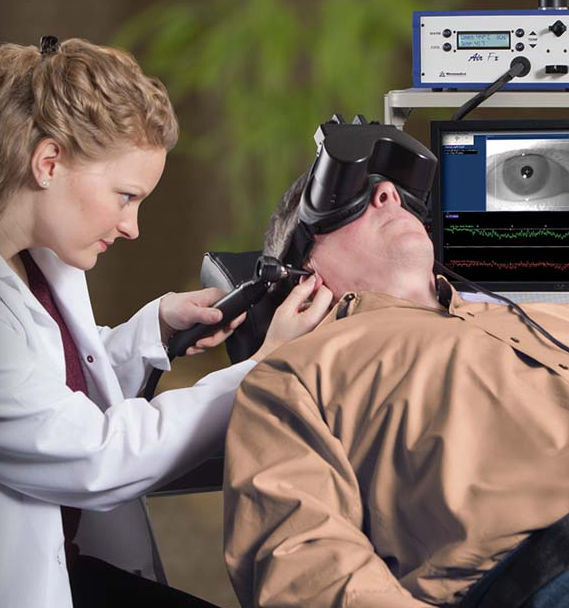Dizziness and Balance
Problems affecting the equilibrium system often cause difficulties related to dizziness and imbalance. The term dizziness can mean many things. Patients often describe symptoms including lightheadedness, blurred vision, a feeling of faintness, spinning (vertigo), weakness and general unsteadiness. Individuals with imbalance often have a history or fear of falls. Imbalance is often made worse when walking in the dark or on uneven surfaces. Patients with equilibrium disorders can experience a wide variety of less common symptoms as well.

Issues affecting the equilibrium system of the inner ear can result in a feeling of unsteadiness, a loss of balance and/or falls. We use three primary systems to maintain our balance (i.e., vision, touch, and inner ear) and a disruption to any of these systems can result in imbalance. It is important for individuals who are off balance to be appropriately evaluated so the contribution of each system can be closely observed.
A number of complex pathways control our equilibrium. Your evaluation will include sophisticated measures of these pathways and your central nervous system. These tests are:
- Auditory Brainstem Evoked Response (ABR): This procedure provides information regarding auditory function to rule out retrocohlear pathology. i.e. to determine any dysfunction developing, in the neural structure of the auditory nerve beyond the cochlea.
- Video/Electro-nystagmography (VNG/ENG): This test is composed of a number of subtests. For this testing, a patient wears video goggles or electrodes. These allow us to watch for small eye movement abnormalities, which can indicate an inner ear problem. There are also sub-tests that can help us identify positional vertigo and/or permanent ear damage. This testing also looks at the top portion of the nerve going to the equilibrium part of the inner ear.
- Electrocochleography (ECOG): This technique records electricity generated in the inner ear and auditory nerve. The test helps rule out an abnormal accumulation of fluid within the inner ear that may be causing acute attacks of true room-spinning vertigo.
- Vestibular Evoked Myogenic Potential (VEMP): This neurological test helps to evaluate a very specific portion of the nerve that goes to the equilibrium part of the inner ear. There are two portions of the equilibrium nerve, and this test evaluates the bottom part of the nerve.
By evaluating and properly managing inner-ear disorders, dizziness and imbalance can often be improved or resolved.
